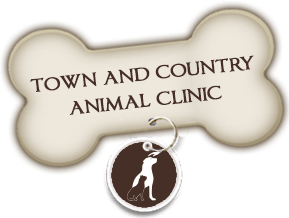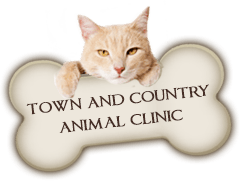If you have just discovered your furry family member now has diabetes, you are not alone. 1 in 500 dogs and cats develop diabetes. It occurs most often in middle aged to elderly pets. With insulin therapy, diet and exercise you can successfully manage your pet’s diabetes. What is diabetes? During digestion, food is broken down into components that are used by the body. Carbohydrates (starches) are converted into sugars. Glucose is the most important … Read More
-
-
Recognizing Signs of Heart Disease
Heart disease can affect any breed of dog or cat. Early diagnosis and treatment can be critical to your pet’s quality of life and life expectancy. Here is a checklist to help determine if your pet is displaying symptoms of heart disease. Breed Predisposition (Dogs): ___ Boxer ___ Cavalier King Charles Spaniel ___ Miniature Poodle ___ Chihuahua ___ Doberman Pinscher ___ Scottish Deerhound ___ Dachshund ___ Great Dane ___ Whippet ___ Pekinese … Read More
-
Senior Care Checklist
As your pet ages, behavioural changes or signs of deterioration can often occur. Answering some simple questions can help identify any age related issues early on. This survey will help us assess issues that require immediate medical attention or monitoring at home. Senior pet screening is recommended for all patients 7 years of age and older. Feel free to print this blog as a reference for your pet’s next visit. Have you noticed any … Read More
-
Recognizing Pain in Your Pet
Since your furry family member cannot verbalize what he/she is feeling, the following checklist may help determine if your pet is experiencing pain. These questions may be asked by your veterinary staff in order to establish a complete history on your pet. Feel free to print this blog as a reference for your pet’s next visit. Check all that apply Abnormal Posture: ___ Prefers lying to sitting or standing ___ Sitting or resting in abnormal … Read More
-
What Is Making My Pet So Itchy
There are many reasons that may cause your pet to become itchy. The following are signs and symptoms you can monitor to help determine why your pet may be itching. These may be questions asked by your veterinary staff in order to establish a complete history on your pet. Feel free to print this blog as a reference for your next examination. 1. Presenting Symptoms: please check any that apply. ___ Hair loss ___ Odour/Smell … Read More
-
How To Prepare Your Pet For A Disaster
Disasters can be a difficult time for both pets and people alike. To ensure you are keeping your pet safe, the following are some tips to help you prepare for disaster: Before the event occurs, find out which evacuation shelters allow pets: It is common for people to be turned away at relief shelters because some facilities do not accommodate pets. If there is the possibility of a disaster occurring in your area, call your … Read More
-
Barking in Dogs
There are numerous reasons why a dog will bark. Therefore, it can be a difficult behaviour to modify. The following are reasons why dogs bark: Inherited behaviour of all dogs Learned behaviour: Dogs will bark in order to get something. When that behaviour is rewarded dogs will continue this behaviour (ex: when your dog barks at the mailman, then the mailman leaves) Territorial defense: Dogs will bark when their territory is threatened. This is an inherited behaviour and may … Read More
-
Thunderstorm / Fireworks Anxiety
Animals have a natural instinct to seek shelter when exposed to loud noises such as fireworks or thunderstorms. During their attempt to escape, your pet may damage property, injure themselves or any person near them in an attempt to hide. For this reason we DO NOT RECOMMEND trying to hold your pet back or prevent them from hiding as this may cause injury to you. In order to deal with thunderstorm and firework anxiety it … Read More
-
Cherry Eye
What is Cherry Eye? There is a gland located in the third eyelid, known as the third eyelid gland. This gland is normally hidden behind the third eyelid and kept in position by a small ligament. A Cherry Eye is when this gland prolapses and is visible with the eye. Cherry Eye is thought to be caused by a laxity or weakness of the ligament holding it in place. What breeds are predisposed to Cherry … Read More
-
KCS (Keratoconjunctivitis Sicca)
What is KCS? KCS is defined as a deficiency of tears that occurs commonly in dogs and infrequently in cats. It is most commonly a chronic disorder. It may affect one eye or both eyes. What are the Signs of KCS? 1. Recurring conjunctivitis: swollen membranes around the eye with minimal irritation to the surface of the eye. 2. Tacky, mucoid discharge: caused by the decrease of tear production. This discharge clings to the … Read More






